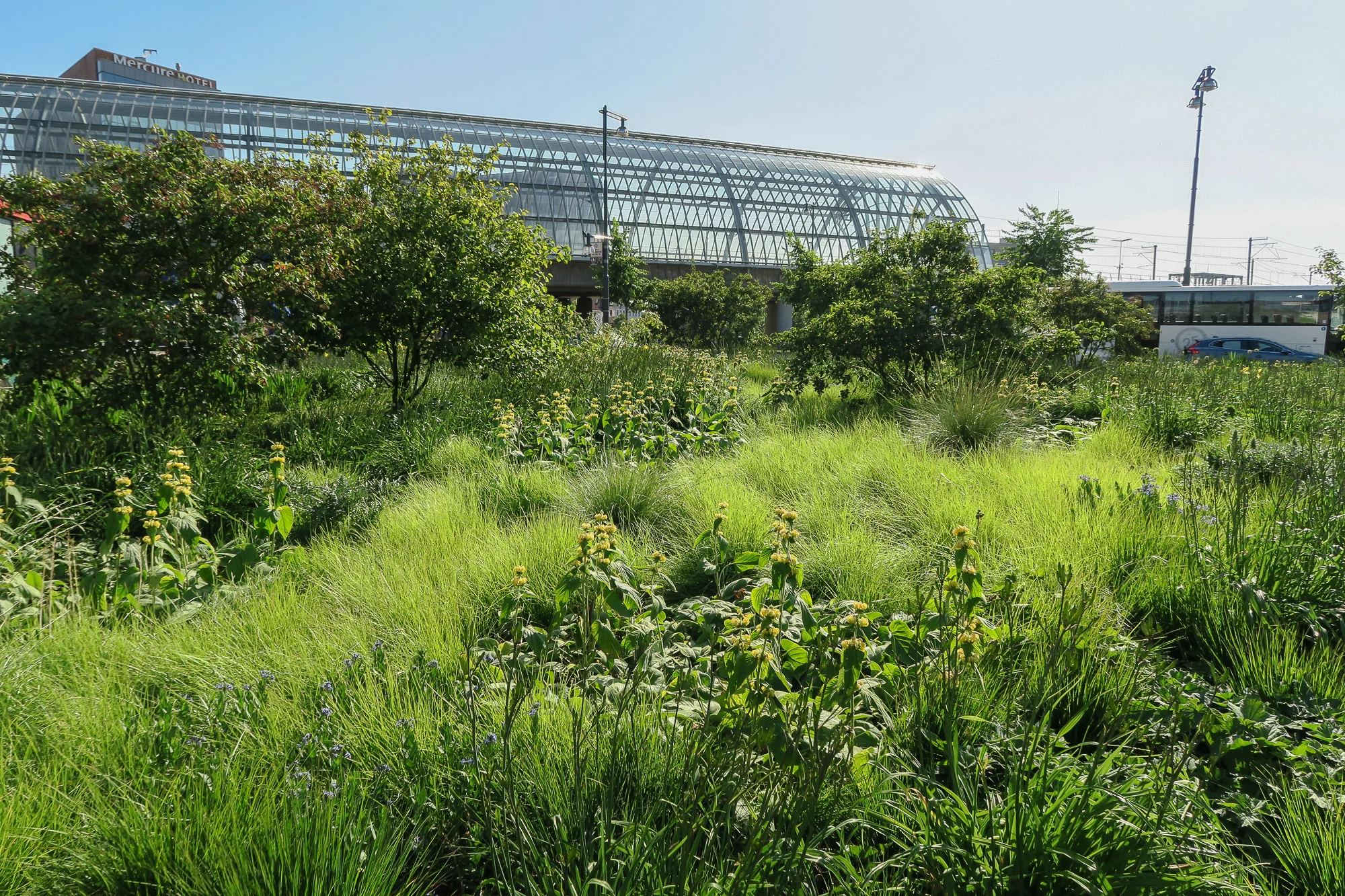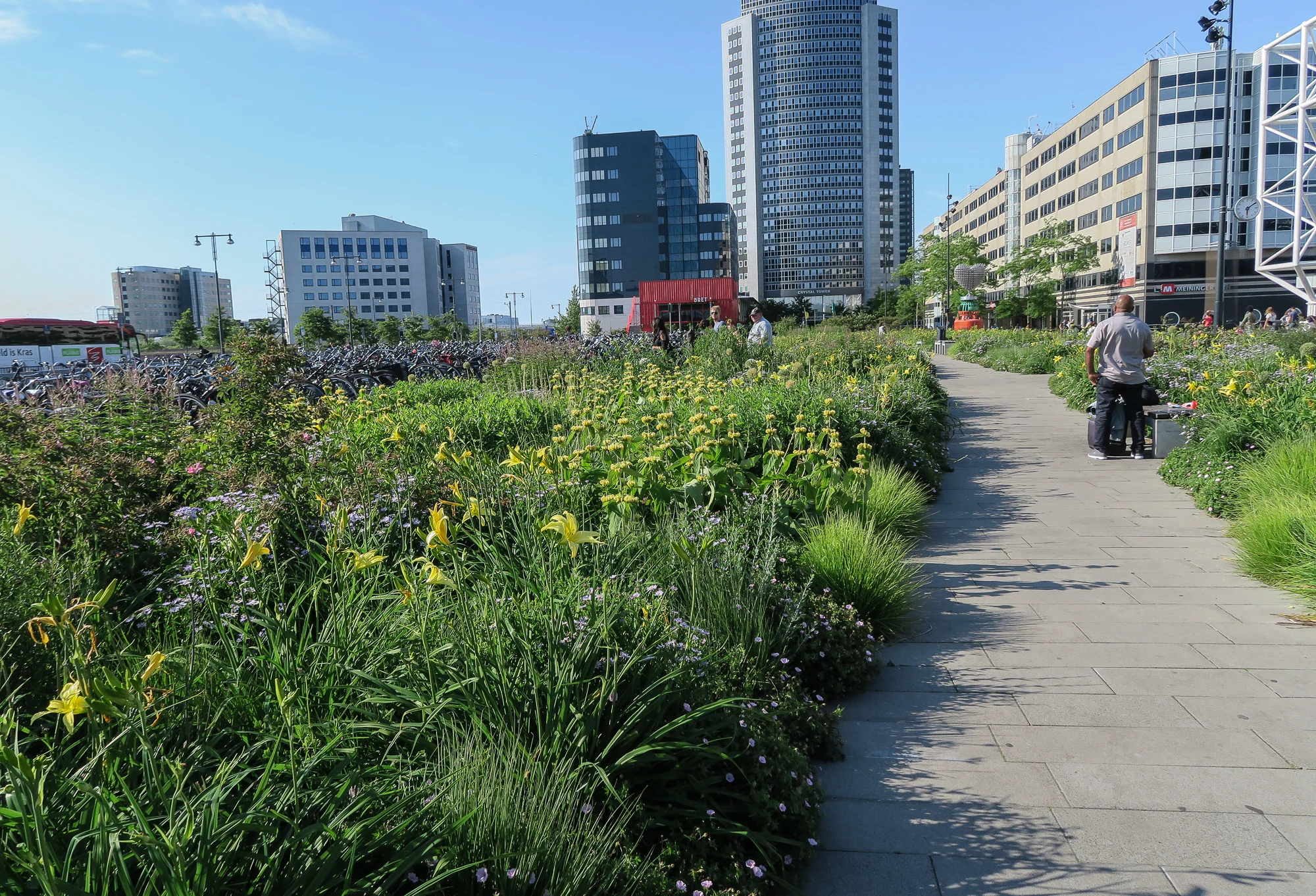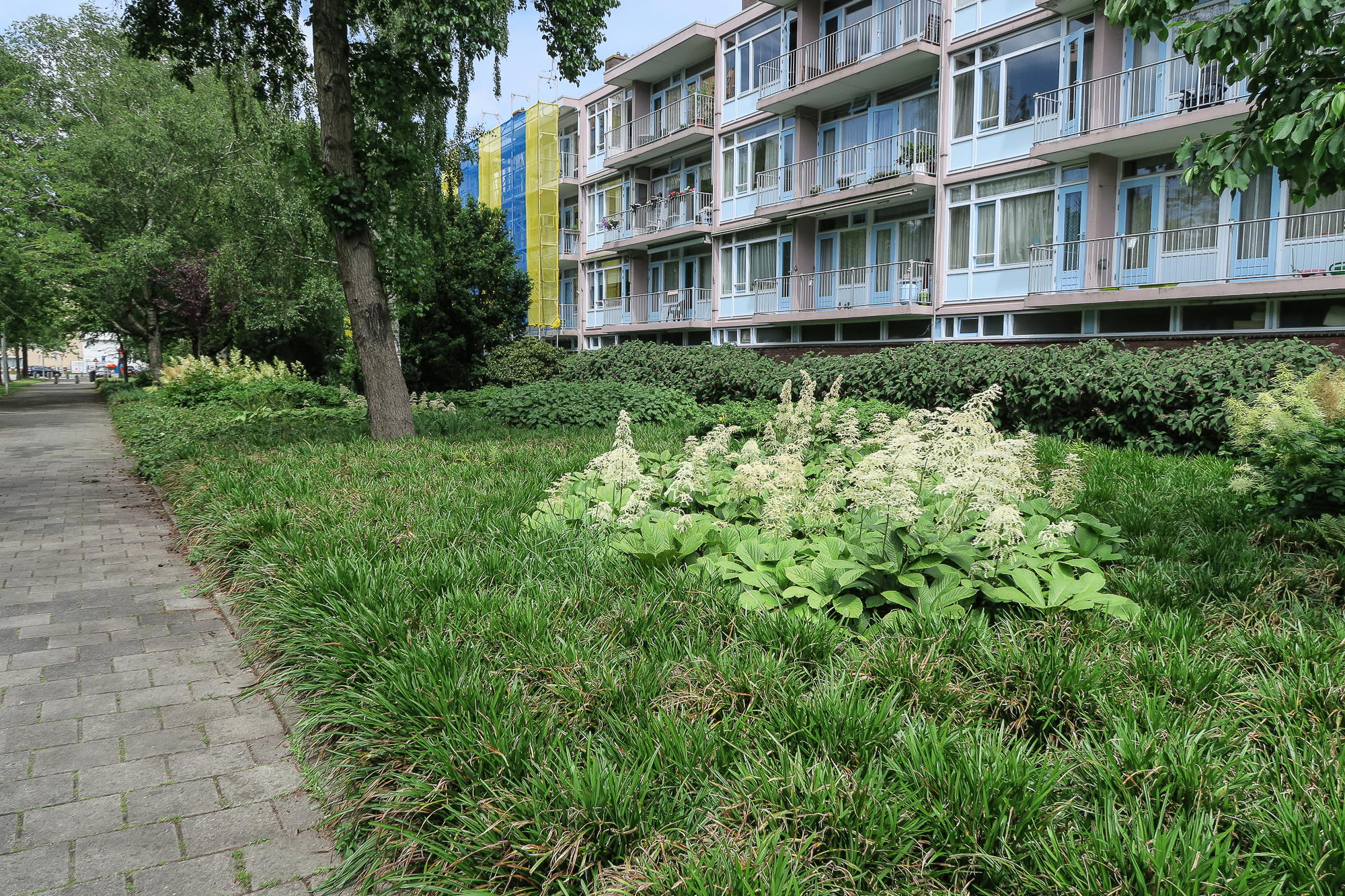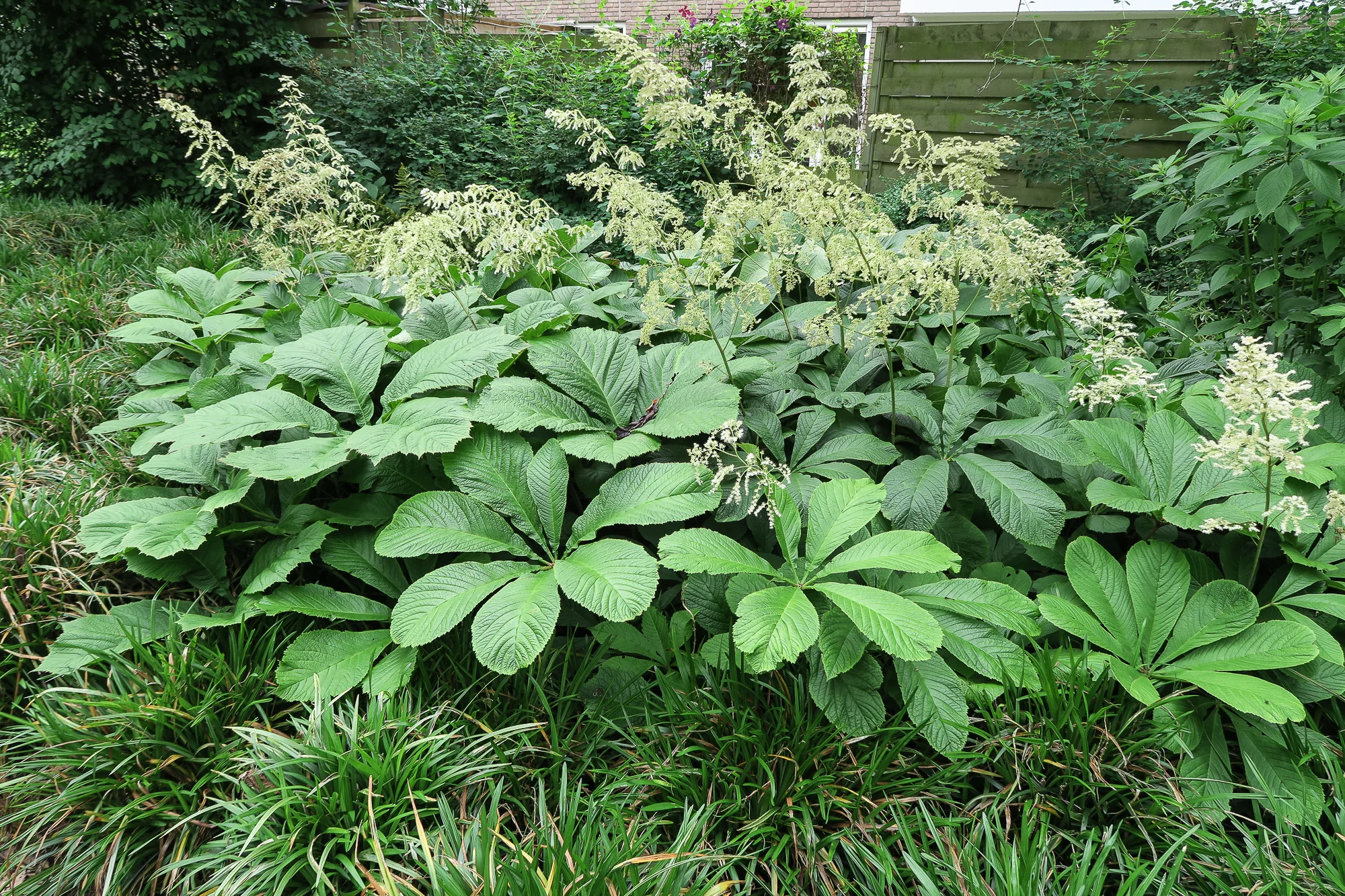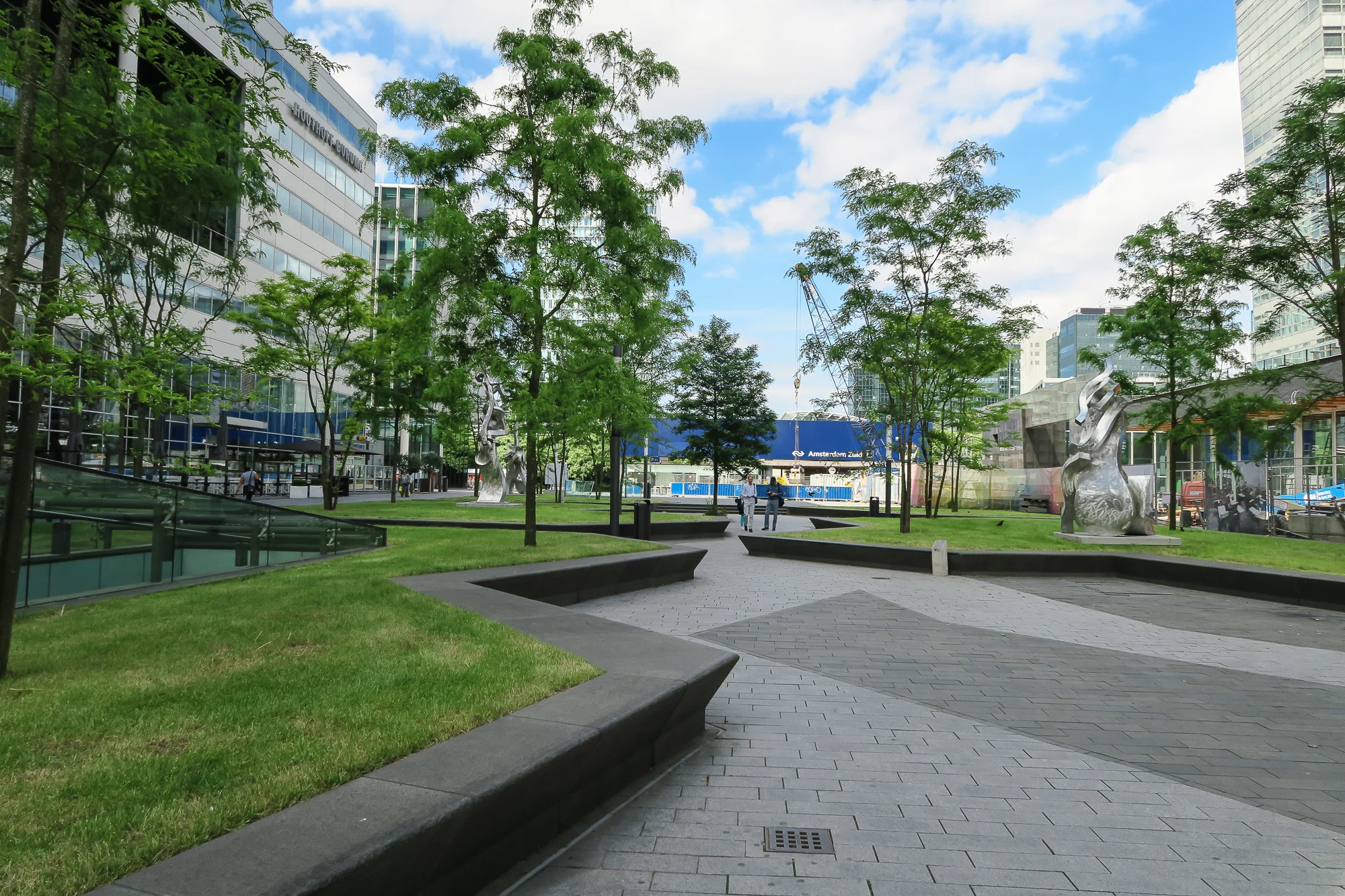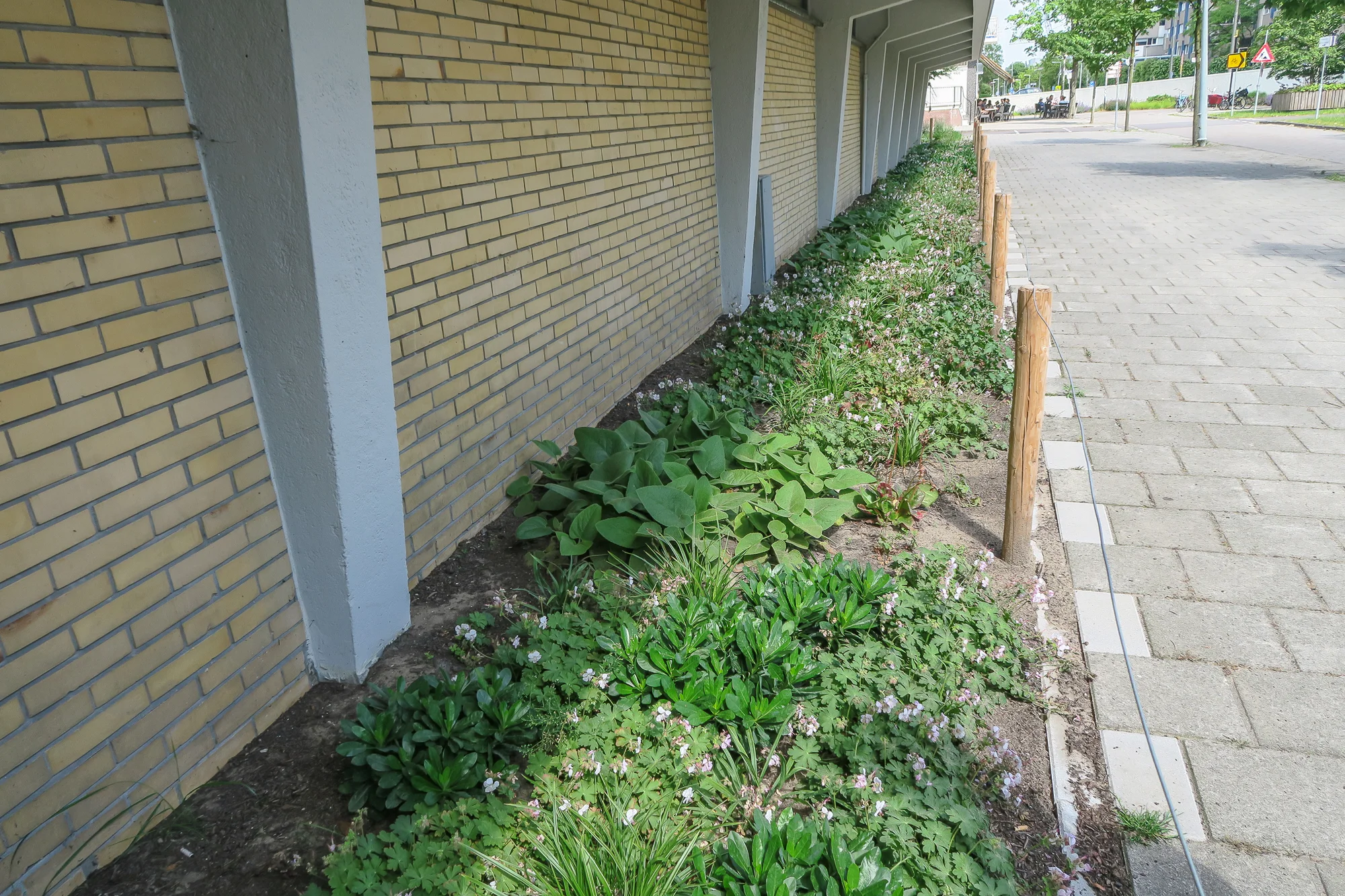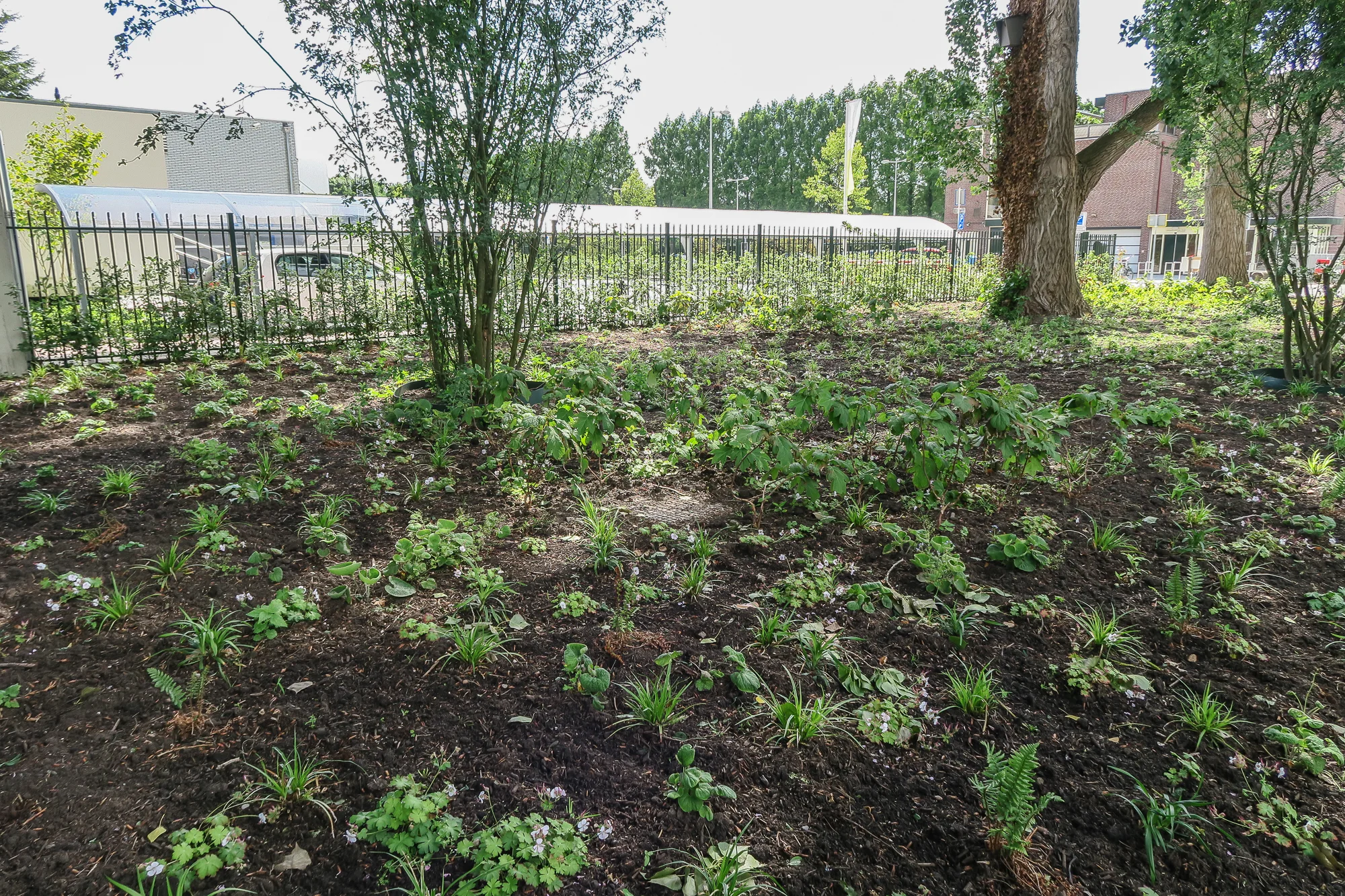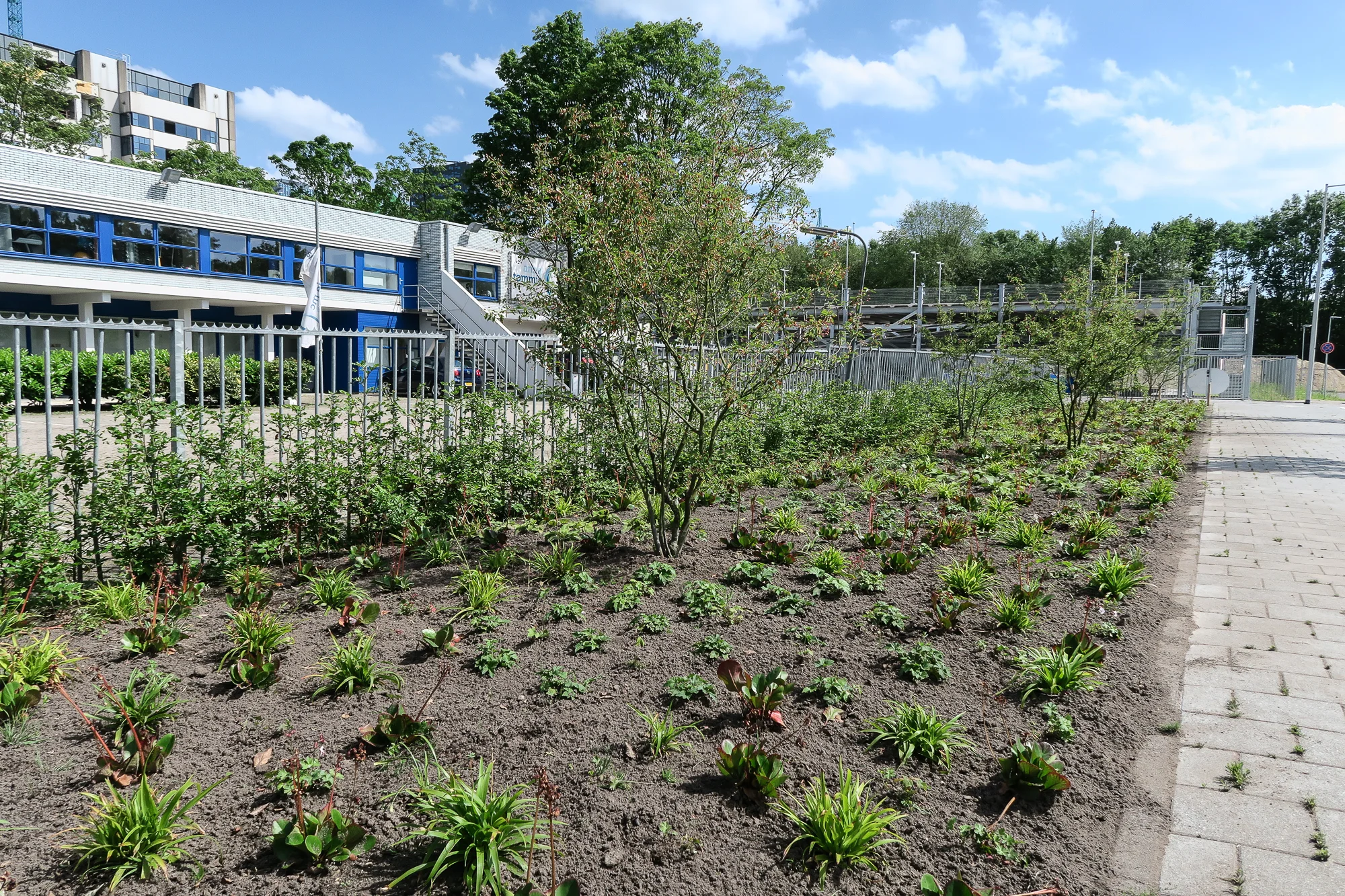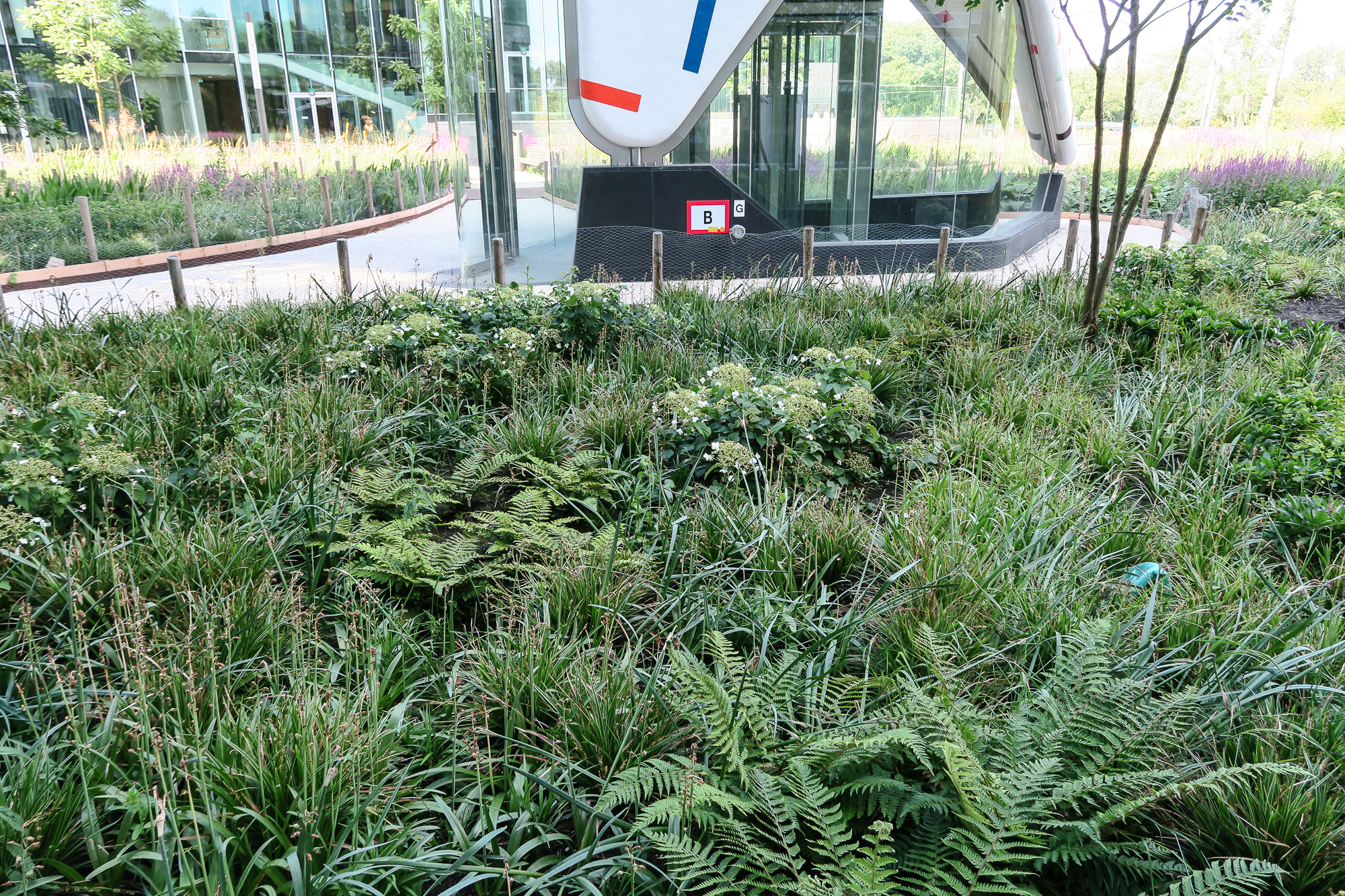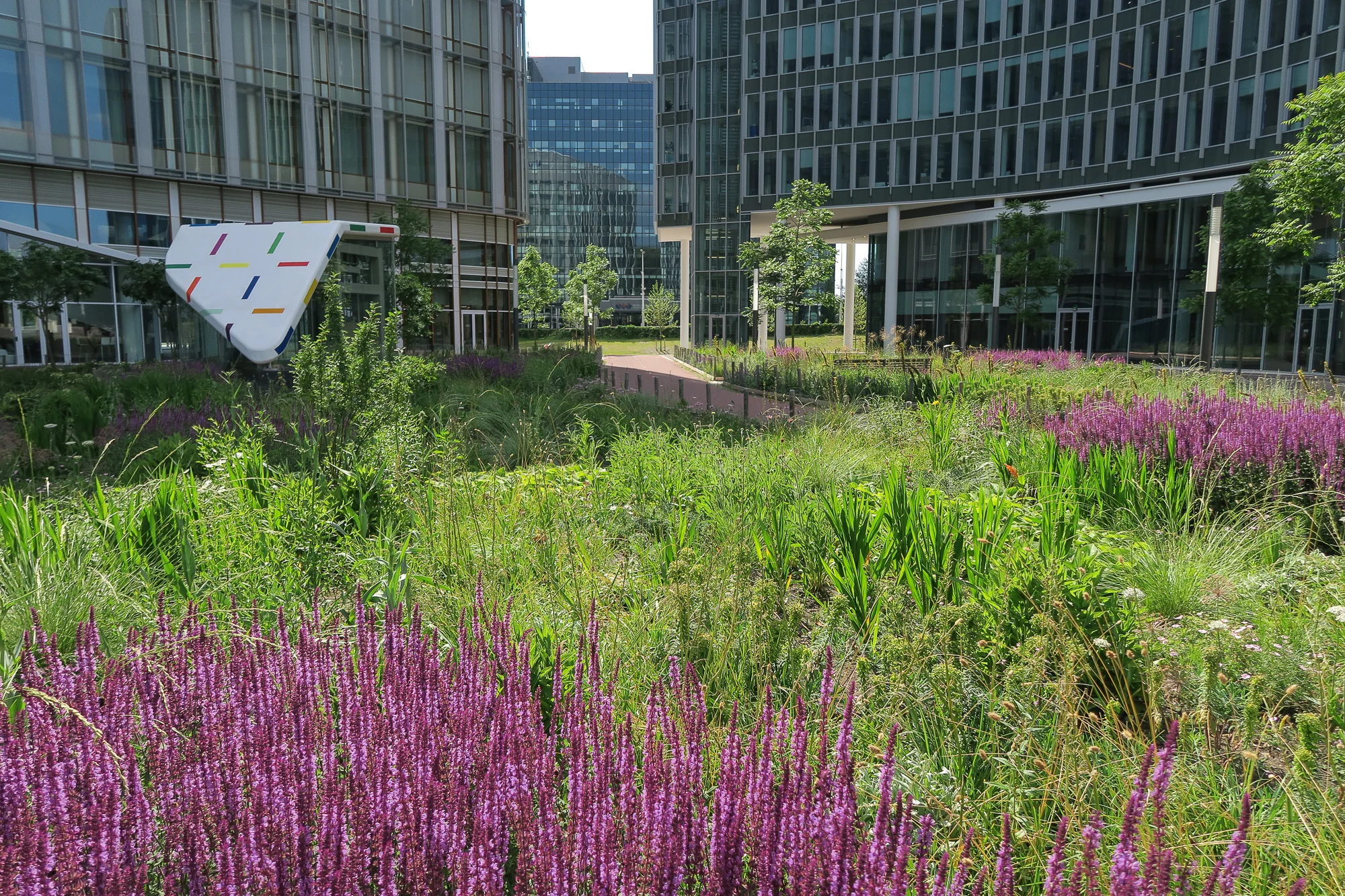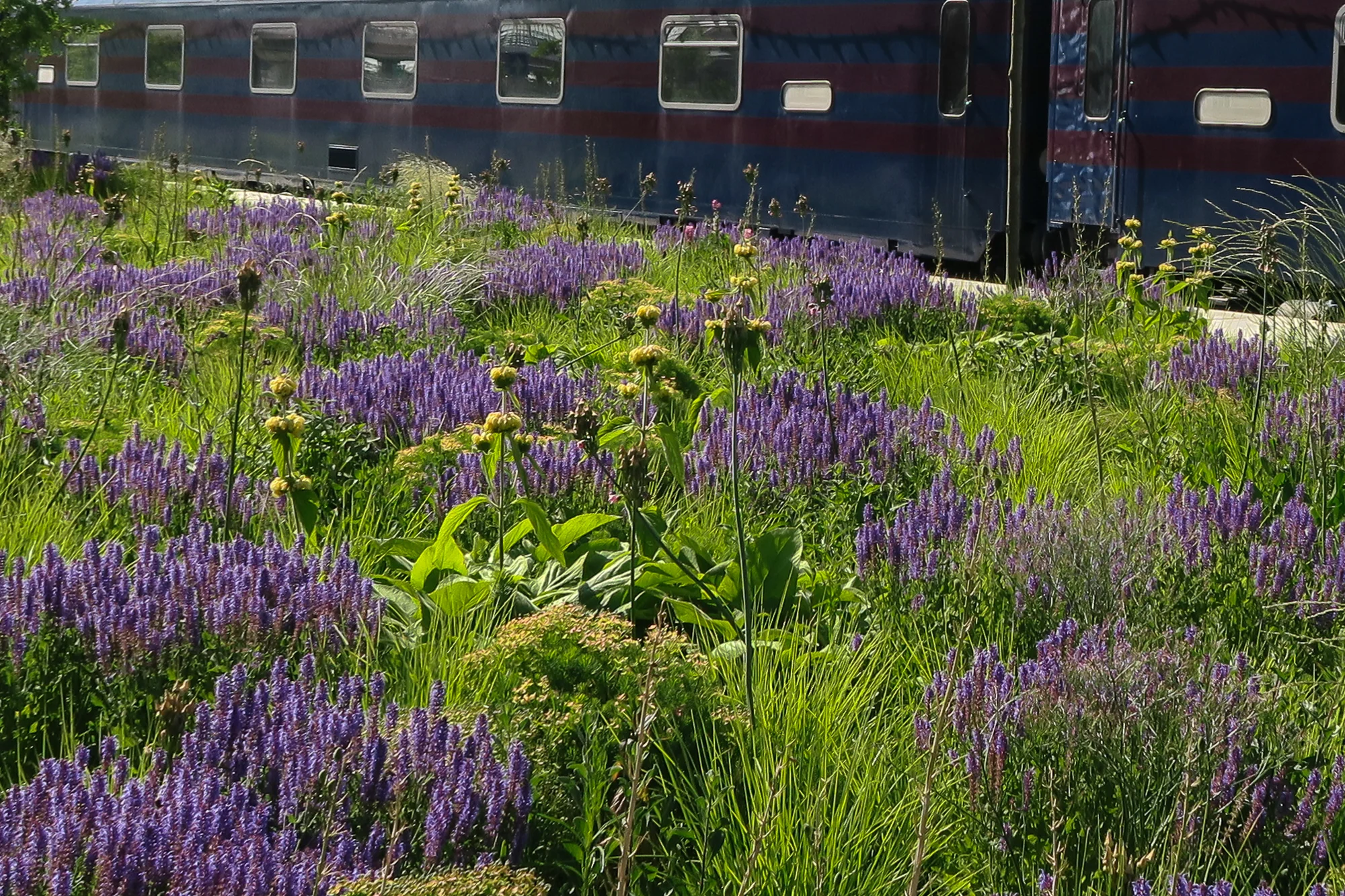Resilient planting design for public urban spaces by Giacomo Guzzon

Resilient and sustainable planting design has become a subject of major interest in the world of landscape architecture, particularly for urban parks and public horticulture. Significantly, Marc Treib has organized a major symposium on the importance of planting design in landscape architecture at the University of California at Berkeley for February 2018 (The Aesthetics of Planting Design). Such a major international conference devoted to this subject is rather epochal in the world of landscape architecture, particularly in the United States, where landscape architects are assumed to care and know little about plants, though this seems to be changing. One who clearly does is Michael Van Valkenburgh, whose work I have had the opportunity to see a lot of, living in New York City. In 2013 Van Valkenburgh said in Landscape Architecture magazine:
“When I first taught at Harvard in the early 1980s, a colleague … told me that landscape architects need to know only 10 species of trees, 10 of ground covers, and 10 of shrubs—the super-hardy ones. This is like telling writers they can use only 30 words. There is no possibility for subtlety, precision, and richness, but plenty for uniformity and boredom. When the vocabulary of landscape architecture is chosen based only on the need for easy and economical plant survival, it is impoverished.”
This guest post is the first in a series by Giacomo Guzzon, an Italian landscape architect, and a close friend, working in central London for Gillespies, a large, international landscape design firm. Unlike most landscape architects, Giacomo has an extensive knowledge of plants not common in the profession. He is also a visiting tutor in planting design at Sheffield University and a visiting lecturer in planting design at Greenwich University School of Landscape Architecture in London.Over the summer Giacomo arranged for a tour of plantings designed by Ton Muller, a Dutch landscape architect in Amsterdam who works for the city design office. Ton has developed a reputation for sustainable and visually appealing plantings in public urban spaces. On that summer day, they were accompanied by Ton’s co-worker Joost de Wit, a landscape architect who formerly worked with Giacomo at Gillespies, and Alessandro Solci, another landscape architect and co-worker in Amsterdam.Here is Giacomo’s report on what Ton is doing across the Channel.As a landscape architect working for a large firm in London I’m fortunate to be able to meet designers from all over the world. I strongly believe in the importance of sharing ideas and knowledge and, being a part of such an international environment, I’m able to explore how other landscape architects are using planting design, and to observe best practices in other countries and other climates. To help sensitize other landscape architects to the importance of planting design, I organise garden visits and planting walks with my colleagues, and I also often travel and meet designers from other parts of the world. Sharing a common interest and passion is a great way to meet other professionals, learn from their experience, and spread the word.I’ve admired the work of Ton Muller for a long time, having first discovered it on Instagram. When I learned that my former Dutch colleague, Joost, was working in the same office in Amsterdam, I immediately told Joost of my wish to meet him. Ton kindly agreed to show me a few projects around the city, so back in June I travelled to the Netherlands to meet him. I was particularly interested in his work because, among his other interests as a landscape architect, he is designing planting projects in public spaces--an area of particular interest to me.A few years before, while on a tour with other horticulturally inclined friends, I had the opportunity to see one of his projects, the Orlyplein square in front of Sloterdijk Station, and I was extremely impressed with his work. The planting was lively and full of colour, but at the same time robust and sustainable. And it felt appropriate in its context, using a wide, mixed herbaceous planting to separate the rail station and commercial area from a large bicycle park opposite it.Ton was trained as a landscape architect and has many years of experience designing public spaces for the city of Amsterdam. He told me that he has been interested in plants since he was a kid. Interestingly, he prefers to design plantings for public spaces rather than gardens. Ton sees urban planting as one of the important elements of the wider cityscape; therefore resiliency, biodiversity, beauty, and toughness have the highest priority.On our first stop, we visited a series of plantings within larger lawn areas along a busy street (Van Leijenberghlaan) not too far from the Amsterdam South Station. These beds were planted several years ago and since then have been maintained by the city.Maintenance is minimal and only involves cutting the plants down in spring. It’s interesting to observe how this planting is developing considering that, after the establishment period of only a few months after planting, no additional irrigation has been provided. This is an experimental planting; some plants are growing better than others, and some species are clearly dominating such as Molinia, Salvia and Helianthus. Phlomis russeliana and Coreopsis tripteris have also self-seeded among the beds. Here plants were planted singly and in small groups within a Molinia matrix.This rather simple planting is more easily cared for by city staff who don’t have the time to tailor a sophisticated maintenance regime. They will simply mow the planting.We then moved to a smaller residential street planted in the centre with a double row of trees. In the buffer area between the buildings and the pavement, Ton designed a planting to withstand drought and shade while looking good throughout the year. Here some plants were installed in much larger groups than in the previous project. Liriope muscari and Brunnera macrophylla are used to cover large areas and within this green carpet smaller groups of more characterful perennials, such as Rodgersia aesculifolia, Aruncus dioicus, Bergenia ‘Eroica’, Polystichum setiferum, Anemone and Kirengeshoma palmata, were used to add variation and interest.This scheme is very successful and plants are thriving happily in the dappled shade of the existing trees. Along the buildings’ boundary line Hydrangea aspera macrophylla was planted to soften the edge between the planting and the apartment blocks.The Rodgersia aesculifolia was looking particularly healthy and happy in this dry, shady area, even without irrigation. I was quite surprised because I’d always thought Rodgersia was a far more moisture dependant species. This planting shows how a sustainable scheme with low inputs can be achieved when the right plants are chosen. Ton selected only species that are resilient and robust and do not demand any special maintenance, especially considering that the city will take care of these beds.Another thing this planting taught me was that plants often respond to environments in ways very different from what is taught in books. Actual experience growing the plants is absolutely essential to learning how they respond to different growing conditions.The tour continued through the Mahlerplein on the top of a bike garage Ton designed. This planting was different from all the others; it did not use any herbaceous perennials.The square features a series of lawns retained by a continuous stone bench/wall and offers the perfect spill-out area for people working in the surrounding buildings during lunchtime. Only Gleditsia and Robinia trees (six different cultivars) were planted, all very resilient and drought resistant species, with a rather light canopy allowing light to reach the ground and creating a comfortable open environment. The city of Amsterdam is paying a lot of attention to the selection of trees for new projects in order to diversify the tree stock with more resilient and stress tolerant species. This example shows how a successful planting design responds to the function and character of a place. In this case, maximizing useable space was more important than creating an ornamental environment.We then continued the tour in the neighbourhood close to the South Station, which is undergoing a major redevelopment. This planting was particularly interesting because it showed perennials used in groups and scattered in random matrices. One simple but effective mix was designed for a very dry and challenging site, a narrow bed in the rain shadow of a cantilevered building, using Geranium x cantabrigiense 'Biokovo', Liriope muscari 'Moneymaker' and Carex morrowii planted in random layout among groups of Euphorbia amygdaloides var. robbiae and Phlomis russeliana.On the other side of the street, an area below large existing canopy trees was planted with a woodland mix. Here the shrub layer is composed of large existing shrubs and some new groups of Hydrangea quercifolia 'Sikes Dwarf' dotted among the perennials. The groundcover layer is composed of tough, robust species such as Euphorbia amygdaloides, Geranium x cantabrigiense 'Biokova', Dryopteris affinis, Liriope muscari 'Moneymaker', Brunnera macrophylla, and Anemone x hybrida ‘Honorine Jobert’. This planting is young now, but it promises to be very effective.Around the corner, we saw another planting in a more open location. Here the shrub layer was composed of large, approximately 1.8-m high-multi-stem Amelanchier trees placed among the perennials. The perennial mix features Luzula sylvatica, Bergenia ‘Eroica’, Geranium x cantabrigense 'St. Ola', Liriope muscari 'Moneymaker', Phlomis russeliana and Anemone x hybrida. All these simple plantings were composed of few but very robust species that will thrive in the city and enrich the cityscape with flowers and varied textures and leaf forms over a long period.Before ending the tour at the Sloterdijk station we visited a planting within an asymmetrical square surrounded by new buildings on the Beethovenstraat. Because this planting is more mature and all plants are intermingling, it is more difficult to spot the different groupings. The planting is divided into a shade and sun area, unified by multi-stem Koelreuteria paniculata trees used throughout.The shaded area on the south side of the square is planted with Carex morrowii, Liriope 'Moneymaker', Dryopteris setiferum 'Dahlem', Polystichum polyblepharum, Euphorbia amygdaloides and Hydrangea petiolaris.The sunny area is covered with many different flowering perennials. At the time of my visit some in flower were Salvia nemorosa 'Amethyst', Echinacea pallida, Phlomis russeliana, Festuca mairei, Euphorbia characias 'Black Pearl' and Asphodeline lutea.We ended our tour at the Sloterdjik Station, which is the only project I had visited before meeting Ton. The area I knew was the square in front of the station but we arrived at the site from the back of the station and Ton showed me an area of planting that I hadn’t seen before.I was amazed by the large planting along the tracks—basically a matrix of Sesleria autumnalis with blocks of Salvia nemorosa 'Blauhügel', Euphorbia waldsteinii 'Betten', Limonium latifolium, Stachys officinalis 'Hummelo' and groups of Phlomis russeliana and Amsonia hubrichtii.The simple but bold mix works very well in juxtaposition with the cityscape and the large dots of salvia create a real wow factor. The planting is beautiful, fresh and contemporary, turning an essentially dull infrastructure area into a visually compelling place.We then moved to the square in front of the station, which is essentially a green roof over the top of the submerged part of the station. The design features a series of planted and hardscape areas providing seating opportunities and refuge for commuters.The structural layer here, the framework of the planting, is composed of multi-stem trees such as Crataegus coccinea, Amelanchier, and some botanical roses, and by tall perennials such as Veronicastrum and taller grasses.The seasonal theme layer, the flowers of the composition, is composed of Symphyotrichum, Amsonia, Hemerocallis citrina, Anemone x hybrida 'Richard Ahrens', Sedum and Phlomis russeliana.The groundcover layer, the filler in the scheme, is Sesleria autumnalis and Geraniums. Another layer of interest through the seasons is provided by bulbous plants, such as Alliums, Narcissus, Camassia and Crocosmia, which will slowly disappear within the other perennials after flowering.I have admired this planting scheme from the moment I saw it. Not only is it robust, resilient and able to withstand the harsh urban environment, it also beautiful and diverse. It radiates joy and creates a welcoming environment in this very utilitarian setting—an important message to send to users in what otherwise could be sterile, unattractive, dull urban areas.Ton’s method is to use mixed planting schemes to bring the feeling of nature into the city. He selects plants according to their needs and habitats, creating designed plant communities in which plants intermingle and create a complex environmental system able to withstand urban stresses such as drought or extreme weather. According to the character and function of a place, and using various natural habitats such as woodlands, woodland-edge or grassland as inspirational models, he selects from a pallet of both native and exotic plants. Shrubs and trees also play an important role in his compositions; they create the framework, giving structure and stature to a planting.When designing a plant community, Ton first chooses the matrix species to hold together the planting and look good throughout the year. These need to be well-behaved, long living, sturdy and clump forming species. In sunny conditions, these could be, for example, Molina, Sesleria or Calamagrostis and in the shade, Carex, Liriope, or Heuchera. He then chooses plants that will add character, distinctive form and colour during a particular time of the year. Borrowing a term from the book ‘Planting in a Post-Wild World’ by Thomas Rainer and Claudia West, he selects the seasonal theme layer.Some of the species Ton uses for this purpose are Hemerocallis, Salvia, Amsonia, Aster, Rudbeckia, Limonium, Stachys, Iris sibirica, or Geranium for sunny areas, or Tiarella, Rodgersia, Brunnera, Bergenia, Luzula, Blechnum spicant, Dryopteris or Euphorbia amygdaloides for shade.Ton’s work in public spaces is exemplary of the kinds of plantings needed in urban landscapes. They are functional, resilient, beautiful and habitat-specific. His work demonstrates that alternatives to the uniformity and blandness that we often encounter in less prominent urban areas can be created by designing the plant palette to meet functional requirements and by selecting plants appropriate to environmental conditions, while giving attention to the character and genius loci of each site. You can follow Giacomo on Instagram at Giacomo_Guzzon and Ton Muller at design_by_nature.
